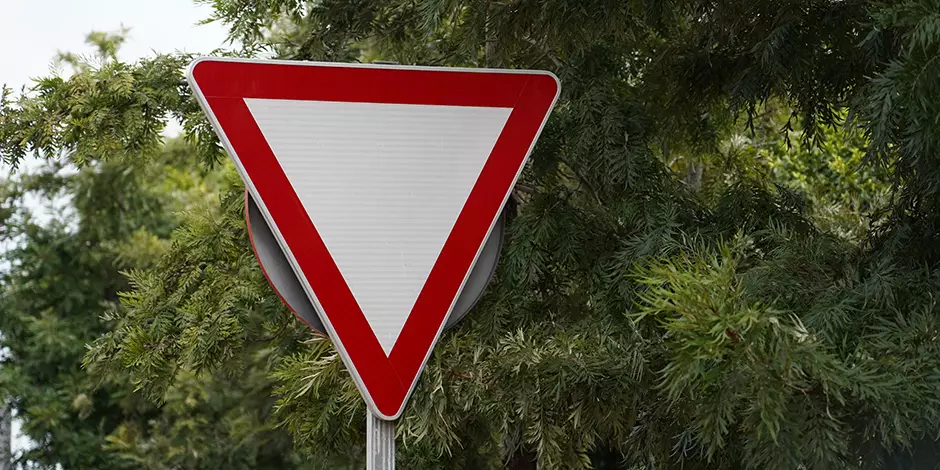

To ensure safe and orderly traffic flow, roads are divided into specific categories. Main roads form large intercity or urban transportation networks, while secondary roads are alternative routes that connect to these main roads. Secondary roads play an important role in regulating traffic and facilitating urban transportation. However, many drivers may not fully know the secondary road signs or the rules to follow when merging from a secondary road onto a main road.
In this article, you’ll find answers to the questions what is a secondary road, what are secondary road signs, and how is right of way determined on secondary roads?
A secondary road is a road located alongside main roads and is generally used for urban or regional transportation. Secondary roads are used to reduce congestion on main roads and to provide access to narrow streets or specific areas within the city. By connecting to the main road, these roads help traffic flow in different directions.
Key characteristics of secondary roads include:
✔ They connect to main roads and help direct traffic.
✔ They are used in urban or rural areas to reach interior regions.
✔ They are generally narrower and carry less traffic than main roads.
✔ They create alternative routes to avoid heavy traffic.
For safe progress in traffic, secondary road signs and markers are highly important. These signs show drivers which type of road they are on and which rules they must follow.
While proceeding on a main road, you may see traffic signs indicating a secondary road junction ahead. These signs are depicted with arrows inside a red triangle showing roads merging from the right, left, or both sides.
What should you do when you see this sign?
✔ While driving on the main road, reduce your speed in case vehicles emerge from a secondary road.
✔ Keep in mind that vehicles exiting from a secondary road may be inattentive.
If you are traveling on a secondary road and intend to enter a main road, you will encounter a hollow, inverted red triangle “Yield” sign. This sign indicates that vehicles on the main road have the right of way.
What should you do when you see this sign?
✔ You must stop or reduce your speed, giving priority to vehicles coming on the main road.
✔ When exiting from the secondary road, check the traffic flow and merge onto the main road when there is a safe gap.
In traffic, right of way is directly related to the type of road you are on. As a general rule, vehicles traveling on the main road have the right of way.
Vehicles coming from a secondary road must yield to vehicles on the main road.
Vehicles on the main road may continue without slowing down.
Failure to comply with the “Yield” sign on a secondary road may cause accidents.
Therefore, you should always be cautious when entering a main road from a secondary road and obey the right-of-way rule.
|
Feature |
Main Road |
Secondary Road |
|
Traffic Density |
Heavier vehicle traffic |
Lighter traffic |
|
Speed Limit |
Generally higher |
Usually lower |
|
Right of Way |
Vehicles on the main road have priority |
Vehicles entering the main road must yield |
|
Connections |
Interconnects with other main and secondary roads |
Connects to the main road |
|
Road Width |
Wider and often multi-lane |
Generally narrower with fewer lanes |
The fundamental difference between main and secondary roads is speed and traffic density. While main roads facilitate long-distance travel, secondary roads are typically used for shorter distances and local transportation.
Secondary roads play a crucial role in maintaining traffic order. They are particularly important in urban transportation and rural areas.
Main uses of secondary roads include:
✔ Serving as connection points to the main road.
✔ Alleviating congestion by providing alternatives to busy main roads.
✔ Providing links between neighborhoods and side streets in urban transport.
✔ Enabling access to interior parts of a region.
Especially in large cities with heavy congestion, secondary roads offer major advantages by minimizing time loss.
In Istanbul’s heavy traffic, it is essential to choose the right route and drive safely. Mirza Rent A Car offers a well-maintained and reliable vehicle fleet to make your journey more comfortable.
✔ Vehicles that are insured, well-maintained, and compliant with traffic rules
✔ Vehicle options in different segments
✔ Short- and long-term rental options
✔ 24/7 roadside assistance and customer support
If you want a comfortable and safe car rental experience in Istanbul, contact Mirza Rent A Car and get ready to hit the road!
Knowing that secondary and main roads operate under specific rules is vital to prevent accidents and ensure safe driving. When entering a main road from a secondary road, drive carefully and yield to vehicles with the right of way.
If you are considering renting a car in Istanbul, you can enjoy a pleasant journey with Mirza Rent A Car’s comfortable, well-maintained, and reliable vehicle options.
Book now and enjoy a safe drive!